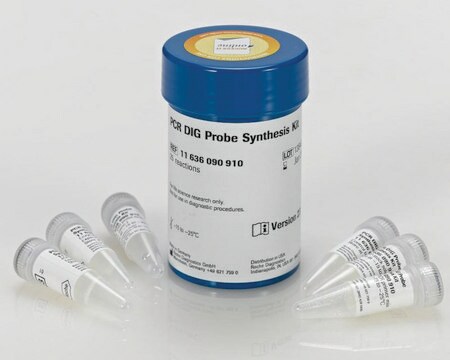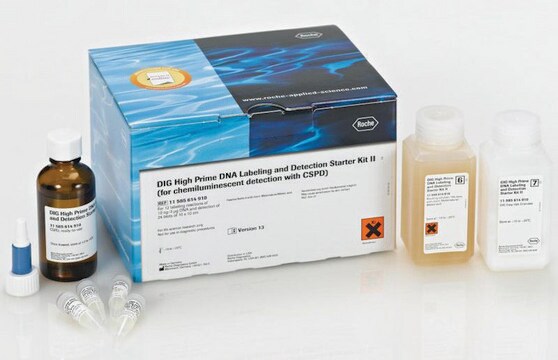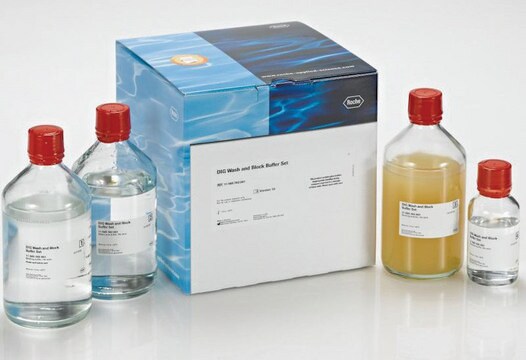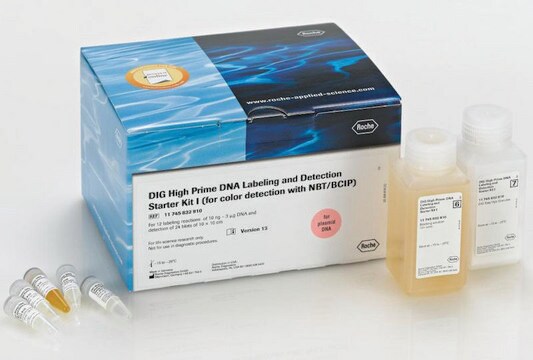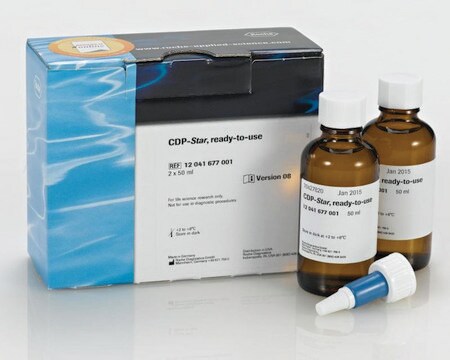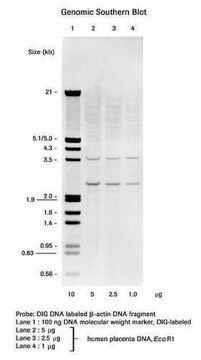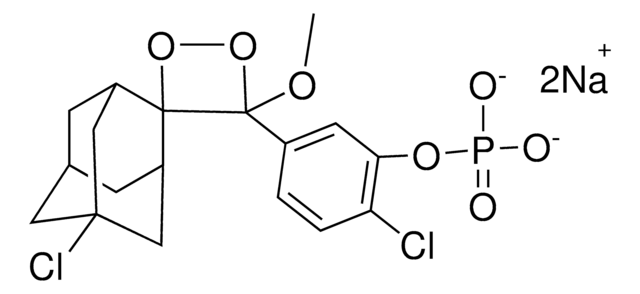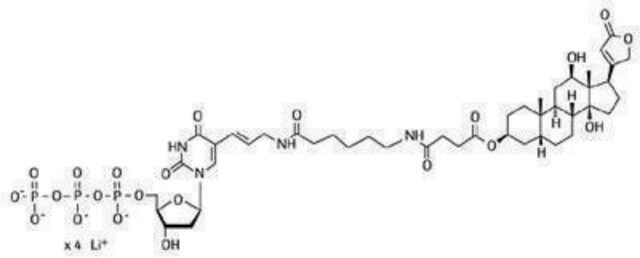11363514910
Roche
DIG Luminescent Detection Kit
sufficient for 50 blots (10 cm x 10 cm each), kit of 1 (5 components), suitable for hybridization
Sinónimos:
luminescent detection kit
About This Item
Productos recomendados
assay
>98% (NMR)
Quality Level
usage
sufficient for 50 blots (10 cm x 10 cm each)
packaging
kit of 1 (5 components)
manufacturer/tradename
Roche
greener alternative product characteristics
Designing Safer Chemicals
Learn more about the Principles of Green Chemistry.
sustainability
Greener Alternative Product
technique(s)
hybridization: suitable
greener alternative category
, Aligned
storage temp.
−20°C
General description
We are committed to bringing you Greener Alternative Products, which adhere to one or more of The 12 Principles of Greener Chemistry. This product is designed as a safer chemical. The DIG System was established as a sensitive and cost-effective alternative to using radioactivity for the labeling and detection of nucleic acids. There are many available publications that prove the versatility of the DIG System, so use of radio-labeling is no longer the only option for labeling of DNA for hybridization.
Application
- critical commercial assays
- Southern hybridization
- northern analysis
- plaque or colony lifts with anti-DIG-AP conjugate and the chemiluminescent substrate CSPD. Chemiluminescent detection with CSPD (following the instructions of the kit) is as sensitive as radioactive methods, but requires much shorter exposure times.
Packaging
Specifications
Preparation Note
- Storage conditions (working solution): Antibody conjugate (vial 3): once opened, should be stored at 2 to 8°C
- Blocking Reagent (bottle 4): in solution at 2 to 8°C
- CSPD (vial 5): at 2 to 8°C when frequently used. Repeated freeze/thaw cycles should be avoided.
Enzymatic dephosphorylation of the dioxetane CSPD by alkaline phosphatase leads to the metastable phenolate anion, which decomposes and emits light at 477nm. The light emission increases with time until a constant intensity is attained.
Assay Time
- Immunological detection 1.5 hours
- Signal detection 5 to 30 minute
Note: Store protected from light.
Other Notes
Solo componentes del kit
- DIG-labeled Control DNA 5 µg/ml
- DNA Dilution Buffer
- Anti-digoxigenin-AP antibody, Fab fragments 750 U/ml
- Blocking Reagent
- CSPD 11.6 mg/ml
Storage Class
11 - Combustible Solids
wgk_germany
WGK 3
flash_point_f
does not flashNot applicable
flash_point_c
does not flashNot applicable
Elija entre una de las versiones más recientes:
¿Ya tiene este producto?
Encuentre la documentación para los productos que ha comprado recientemente en la Biblioteca de documentos.
Los clientes también vieron
Artículos
Digoxigenin (DIG) labeling methods and kits for DNA and RNA DIG probes, random primed DNA labeling, nick translation labeling, 5’ and 3’ oligonucleotide end-labeling.
Nuestro equipo de científicos tiene experiencia en todas las áreas de investigación: Ciencias de la vida, Ciencia de los materiales, Síntesis química, Cromatografía, Analítica y muchas otras.
Póngase en contacto con el Servicio técnico